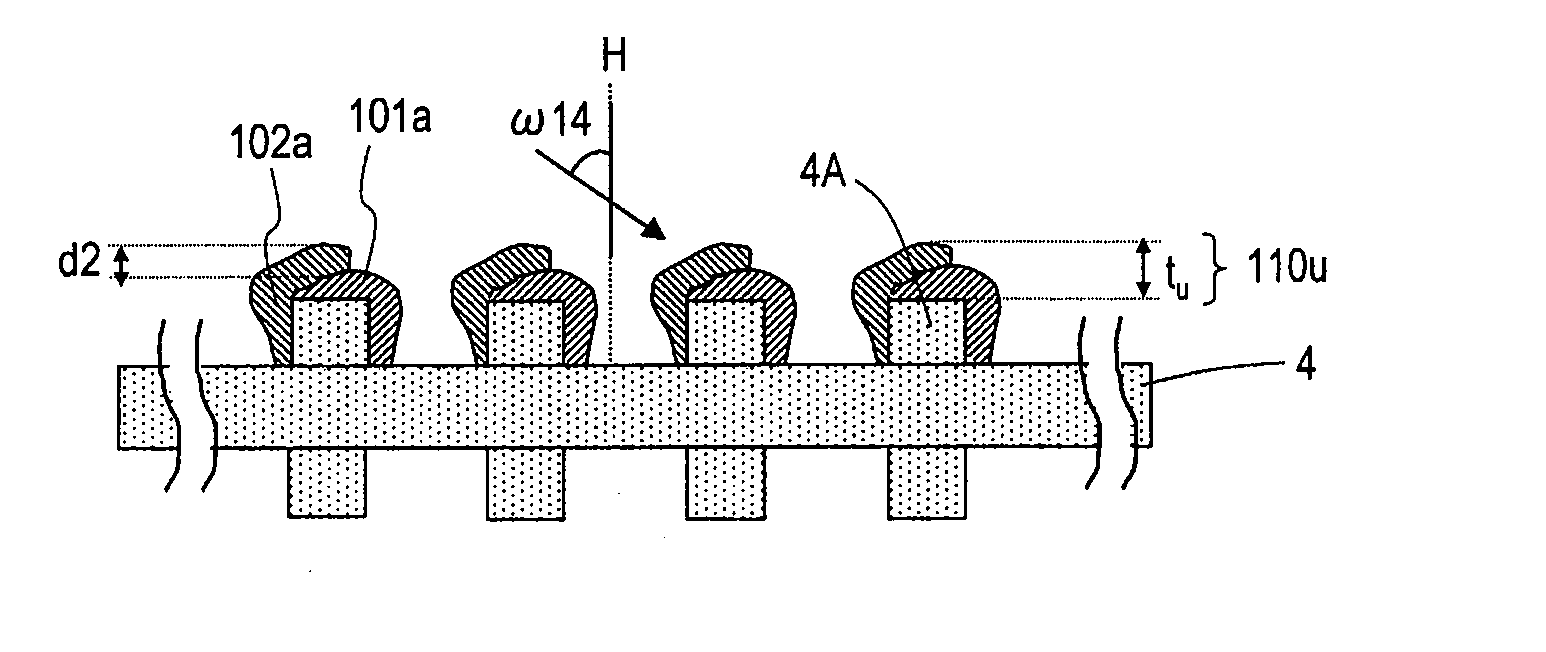Method for manufacturing electrochemical element electrode
a manufacturing method and electrochemical element technology, applied in the field of electrochemical elements, can solve the problems of undetected wrinkles or ruptures of current collectors, local decline of cell characteristics, and distortion of negative electrodes including current collectors, and achieves the reduction of active material deposited on current collector dents, simple and highly productive methods, and high reliability of charge/discharge cycle characteristics.
- Summary
- Abstract
- Description
- Claims
- Application Information
AI Technical Summary
Benefits of technology
Problems solved by technology
Method used
Image
Examples
embodiment 1
[0097]A method for producing an electrode for an electrochemical device (hereinafter, referred to simply as the “electrode”) in Embodiment 1 according to the present invention will be described. The electrode for an electrochemical device in this embodiment is a negative electrode for a lithium secondary cell using a silicon oxide as the active material.
[0098]FIG. 1 though FIG. 5 are schematic cross-sectional views of steps illustrating a method for producing an electrode in this embodiment. FIG. 6(a) is a schematic cross-sectional view showing an example of a vapor deposition apparatus usable for the method in this embodiment, and FIG. 6(b) is a cross-sectional view illustrating an incidence angle ω of a vapor deposition material in the vapor deposition apparatus shown in FIG. 6(a).
[0099]
[0100]First, a vacuum vapor deposition apparatus used in this embodiment will be described. As shown in FIG. 6(a), a vacuum vapor deposition apparatus 50 includes a chamber 1, an evacuation pump 2 ...
example 1
[0182]First, an electrode in Example 1 according to the present invention will be described.
[0183]1. Production of a Current Collector
A copper alloy foil having a thickness of 18 μm (produced by Hitachi Cable Ltd.; Zr amount: 0.02% by weight) was processed with roller press at a cable pressure of 1 ton / cm using a roller having a generally diamond-shaped bottom surface and a plurality of dents. Thus, a current collector having a plurality of bumps on a surface thereof was formed.
[0184]FIGS. 10(a) and 10(b) are respectively a schematic cross-sectional view and a schematic top view of a current collector in Example 1. As shown in the figures, each of bumps 4A was like a rectangular column (average height: 6 μm) having a diamond-shaped top surface (lengths of diagonal: 10 μm×20 μm). A pitch Px of the bumps 4A in an X direction along the shorter diagonal of the diamond shape was 30 μm. Lines of the bumps 4A along the X direction, and another lines of the bumps 4A shifted from the above l...
example 2
[0272]First, an electrode in Reference Example 2 according to the present invention will be described.
[0273]1. Production of a Current Collector
A current collector substantially the same as used in Example 1 was produced by substantially the same method as described above with reference to FIGS. 10(a) and 10(b).
[0274]2. Formation of the Active Material Layer
[0275]An active material layer was formed on both surfaces of the current collector using the vapor deposition apparatus 52 shown in FIGS. 12(a) and 12(b) by substantially the same method as described above with reference to FIGS. 14 and 15. With reference to these figures again, a method for forming the active material layer in this example will be described.
[0276]In this example, in the chamber 1 of the vapor deposition apparatus 52, the rate of the current collector 4 running between the first roller 3 and the second roller 8 was 1 cm / min. As the vaporization source 9, the carbon crucible 10 located below the vapor deposition ...
PUM
| Property | Measurement | Unit |
|---|---|---|
| height | aaaaa | aaaaa |
| height | aaaaa | aaaaa |
| incidence angle | aaaaa | aaaaa |
Abstract
Description
Claims
Application Information
 Login to View More
Login to View More - R&D
- Intellectual Property
- Life Sciences
- Materials
- Tech Scout
- Unparalleled Data Quality
- Higher Quality Content
- 60% Fewer Hallucinations
Browse by: Latest US Patents, China's latest patents, Technical Efficacy Thesaurus, Application Domain, Technology Topic, Popular Technical Reports.
© 2025 PatSnap. All rights reserved.Legal|Privacy policy|Modern Slavery Act Transparency Statement|Sitemap|About US| Contact US: help@patsnap.com



